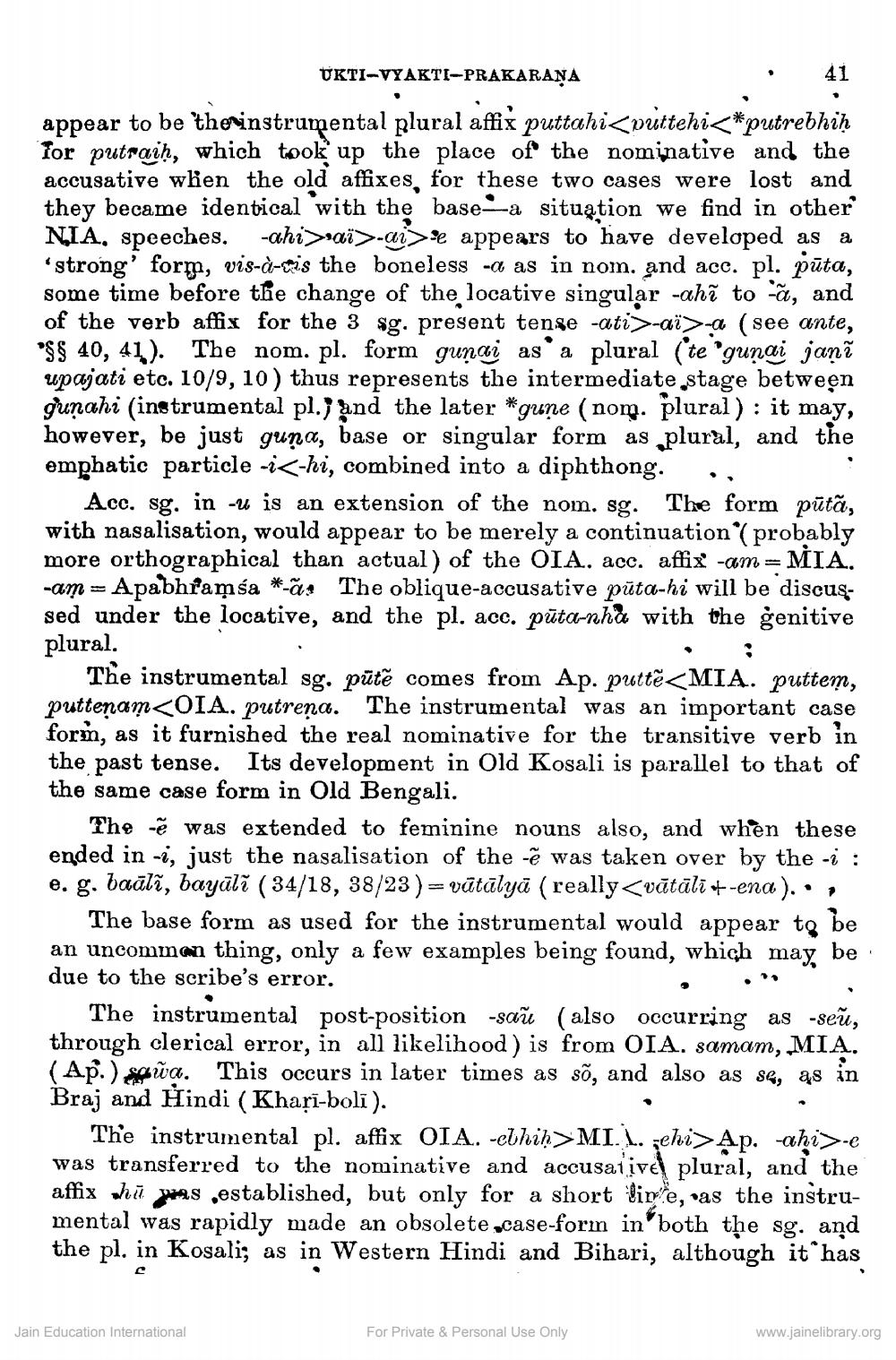________________
UKTI-VYAKTI-PRAKARANA
a
appear to be the instrumental plural affix puttahi<puttehi<*putrebhiḥ for putraiḥ, which took up the place of the nominative and the accusative when the old affixes, for these two cases were lost and they became identical with the base a situation we find in other NIA. speeches. -ahi>ai>-ai>e appears to have developed as 'strong' form, vis-à-vis the boneless -a as in nom. and acc. pl. pūta, some time before the change of the locative singular -ahi to a, and of the verb affix for the 3 sg. present tense ati-ai>-a (see ante, SS 40, 41). The nom. pl. form gunai as a plural (te 'gunai janī upajati etc. 10/9, 10) thus represents the intermediate stage between gunahi (instrumental pl.; and the later *gune (nom. plural): it may, however, be just guna, base or singular form as plural, and the emphatic particle -i-hi, combined into a diphthong.
Acc. sg. in -u is an extension of the nom. sg. The form pūtã, with nasalisation, would appear to be merely a continuation"(probably more orthographical than actual) of the OIA. acc. affix -am = MIA. -am- Apabhramsa *- The oblique-accusative puta-hi will be discussed under the locative, and the pl. acc. puta-nha with the genitive plural.
:
The instrumental sg. pute comes from Ap. putte<MIA. puttem, puttenam<OIA. putrena. The instrumental was an important case form, as it furnished the real nominative for the transitive verb in the past tense. Its development in Old Kosali is parallel to that of the same case form in Old Bengali.
41
The was extended to feminine nouns also, and when these ended in -, just the nasalisation of the - was taken over by the -i: e. g. baāli, bayāli (34/18, 38/23)=vātālyā (really <vātāli +-ena ). •
The base form as used for the instrumental would appear to be an uncommon thing, only a few examples being found, which may be due to the scribe's error.
The instrumental post-position -sau (also occurring as -seu, through clerical error, in all likelihood) is from OIA. samam, MIA. (Ap)wa. This occurs in later times as sõ, and also as se, as in Braj and Hindi ( Khaṛī-bolī ).
Jain Education International
•
The instrumental pl. affix OIA. -ebhiḥ>MI.. zehi>Ap. -ahi>-e was transferred to the nominative and accusative plural, and the affix has established, but only for a short line, as the instrumental was rapidly made an obsolete,case-form in both the sg. and the pl. in Kosali; as in Western Hindi and Bihari, although it has
Ը
For Private & Personal Use Only
www.jainelibrary.org




